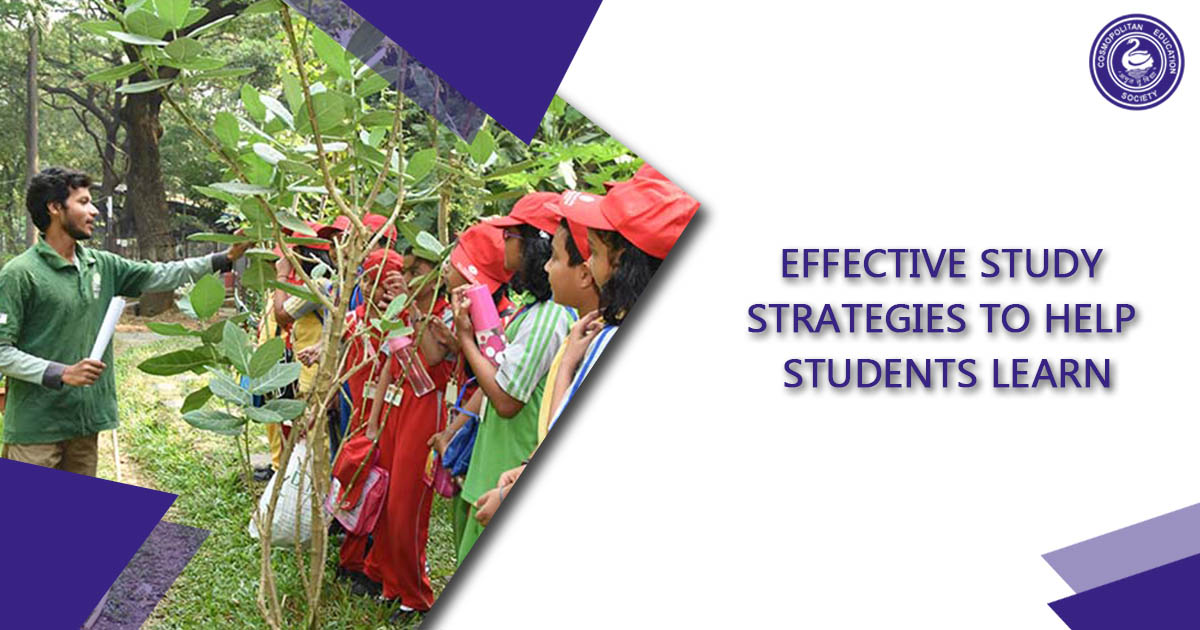
Effective Study Strategies to Help Students Learn
From your journey in kindergarten until 12th grade, students are expected to understand how to study, schedule their time appropriately and complete assignments without procrastination. Thought these skills are not taught in early school directly but through various experiential learning methodologies. By explicitly teaching these life skills a student can learn how to avoid distraction, combat procrastination and study effectively.
1. Effective methods to avoid distraction:
When studying physically in a classroom or in a virtual class, students may keep their phones nearby and subsequently get distracted by their notifications. They tend to respond to these notifications and then get stuck in the digital rabbit hole. This could amount to missing critical lesson parts of a class or wasting time. Coupled with potential noise distractions especially with a virtual learning environment.
a. Change your learning space: You need to first ask yourself, “Have you made your environment as distraction-free as you can?” While most students have limited options when it comes to virtual learning, selecting the best location in a home comes after experiencing each spot and its distraction ratio. If you are more likely you get distracted by mobile or laptop notifications, you can choose to turn them off till your lesson is on. We recommend placing your phone in another room during class or study time so that it’s not easily accessible. Non-virtual disturbances, like noise, can be curbed through noise-cancellation headphones or inexpensive foam earbuds.
b. Don’t choose distractions: It is rightly said that “Multitasking almost always exacts a cost. So if you add a second task, it is going to reduce the efficiency of that first task,”. It’s hence very clear that multitasking is not helping students concentrate better, even though they mostly think it’s fine. According to a renowned research company, “51% of teens and 34% of tweens (ages 8 through 12) watch TV while studying: this is because more than 70% of the teens believe that a TV playing in their environment won’t affect their homework. Not just TV, some teens also consider listening to music while especially while doing math. Listening to music does distract, but on the other hand, it can energize. Did you know, music can boost the autonomic nervous system with emotionally uplifting tracks? It can also increase heart rates and blood pressure. Most athletes use music as a source of motivation.
c. Take planned breaks: If students find themselves often distracted, It’s a wise decision to take a break. Data has proven that short breaks rejuvenate students, allowing them to return to schoolwork with better concentration levels. On the other hand, we recommend taking planned breaks as they are more effective than spontaneous ones. Scheduling a well-planned break ensures the pause remains brief and also after a topic is completed, getting students excited to return to their work for a fresh topic.
2. How to combat procrastination?
There are critically three main reasons why students procrastinate: the task is “boring”; the task seems overwhelming or impossible, lastly, the task provokes fears of failure, causing a student to self-sabotage. Below are few effective ways to address and prevent procrastination:
a. Commence work in class: Simply beginning the work is a step taken against procrastination. Procrastination is often seen during an exercise regime where people tend to underestimate how much they’ll enjoy a given task. But once the task has begun, they often find that task less boring or overwhelming than predicted. Teachers can initiate this process by devoting the last five to ten minutes of class time to beginning an upcoming project or paper. Starting the project in class means that a student is more likely to continue outside of class. This also allows students time to directly ask the questions they need to be answered in order to begin.
b. Use a planner: When students aren’t personally told to plan out their work or guided on how to schedule their day, they tend to find it difficult to successfully complete given tasks on time. We advise the teachers in class to introduce the students to using a planner. This means not only teaching them to write down the dates of big exams and projects, but also reminders and scheduled work or study times for chipping away at the task. This when becomes a habit shall reap you fruits where you shall never default at any task completion.
c. Learn to break down tasks: You will agree when we state that when you start a big project all together the task seems unachievable and overwhelming. Hence, students need to absorb how to break down large tasks into bite-sized doable/achievable chunks with respective timelines. While today’s students are capable of doing this all by themselves they may additionally not know how to go about it. A teacher can then demonstrate and take through this concept which can aid students toward success.
Summing up:
The above management techniques can help boost students studying capabilities with heightened autonomy during the current virtual learning time. When teachers and parents nurture these valuable tools and models, they aid students to use these tools next time they feel distracted or pulled to procrastinate. At Shri. Harshad C. Valia International School (CBSE) we encourage our teachers to foster these beneficial tools and methodologies to help students cope up with new virtual learning techniques. You may also want to know how you can help your child handle homework successfully this quarantine.
